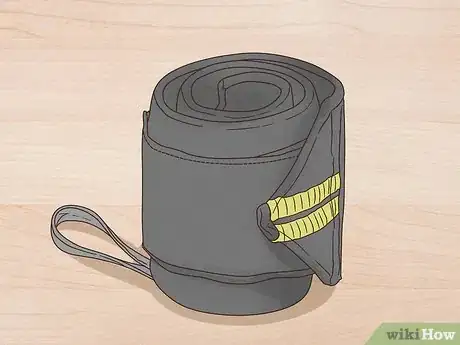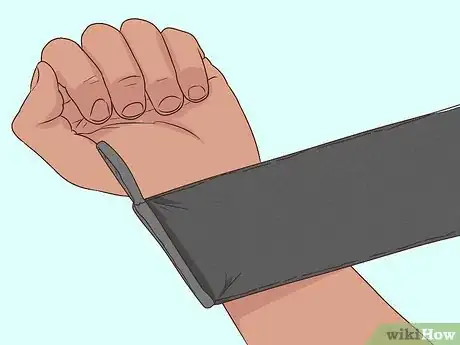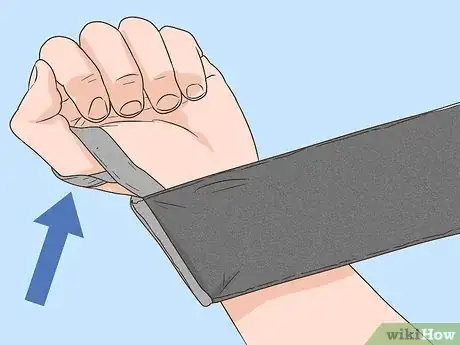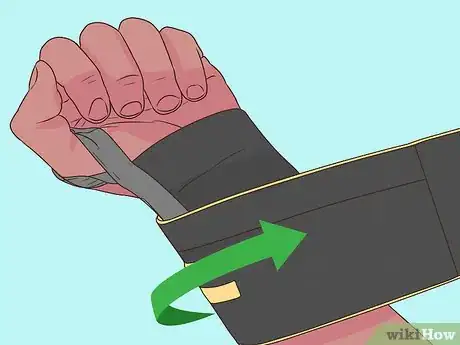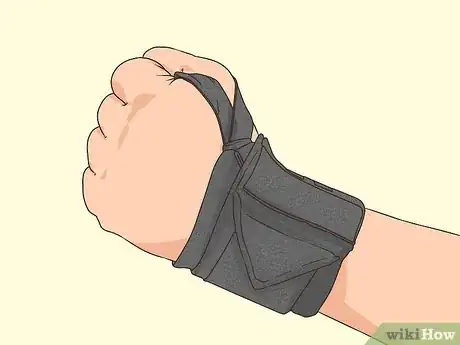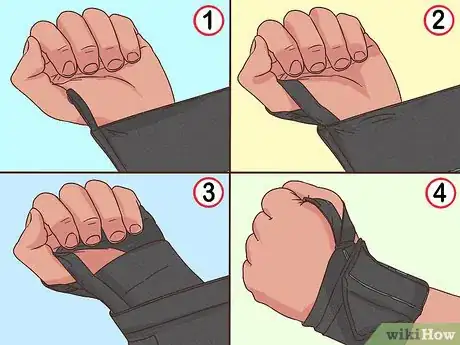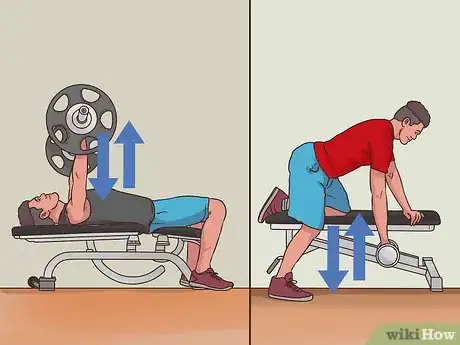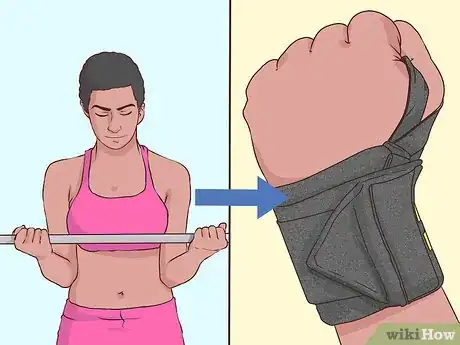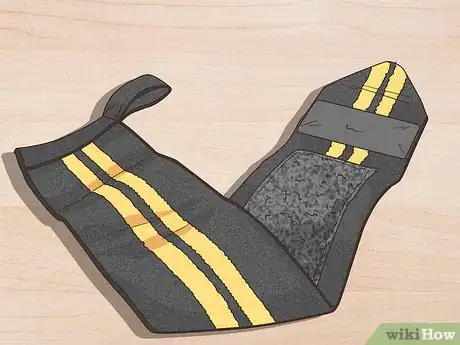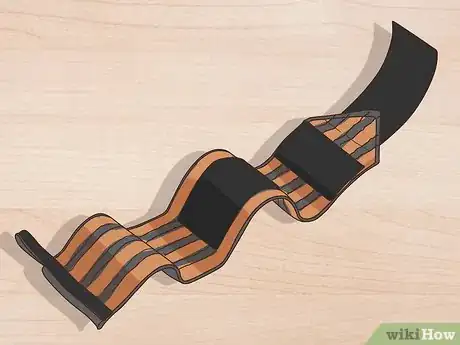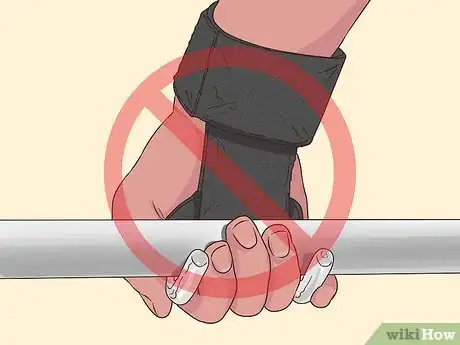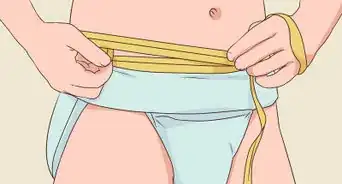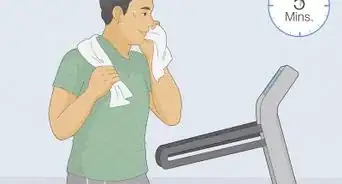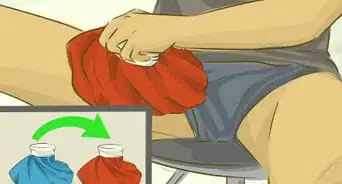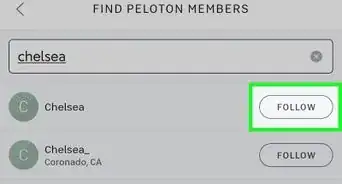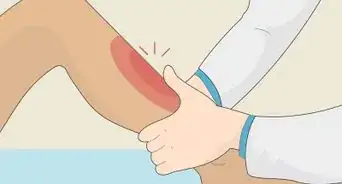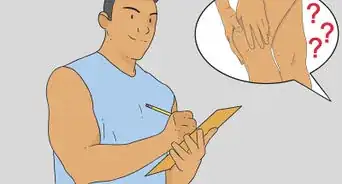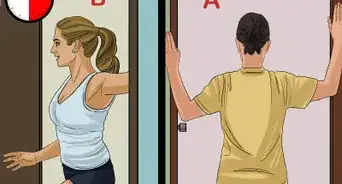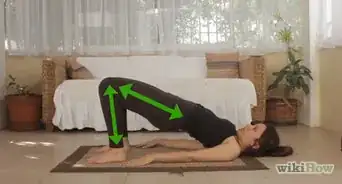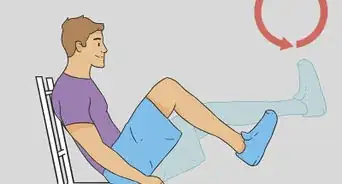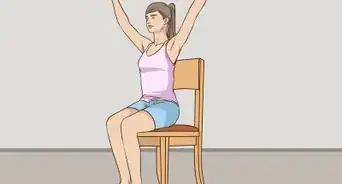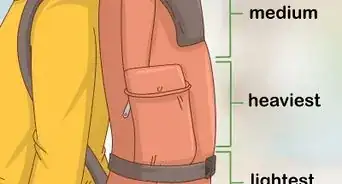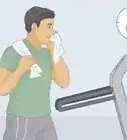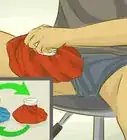This article was co-authored by Joel Giffin, PT, DPT, CHT. Dr. Joel Giffin is a Doctor of Physical Therapy and the Founder of Flex Physical Therapy in New York, New York. With over 15 years of experience as a Certified Hand Therapist (CHT), Dr. Giffin treats the whole body and specializes in rehabilitation of the hand and upper extremities. He has treated Broadway theater performers backstage at shows such as The Lion King, Sleep No More, Tarzan, and Sister Act. Flex Physical Therapy also specializes in occupational and pelvic floor therapy. Dr. Giffin earned his Master’s degree in Physical Therapy with honors from Quinnipiac University and received his Doctor of Physical Therapy (DPT) degree with distinction from Simmons College. He is a member of the American Physical Therapy Association and the American Society of Hand Therapists.
There are 12 references cited in this article, which can be found at the bottom of the page.
This article has been viewed 30,955 times.
Wrist wraps are used to support your wrist joints during weight lifting. Bodybuilders typically use wrist wraps when performing pressing or pushing exercises. Exercises like the bench press force the wrists to bear a lot of weight, and wrist wraps will support the wrists and reduce strain.[1] To use wrist wraps correctly, you’ll need to put them on snugly so they fully support your wrists. Then, perform pushing or lifting exercises that require a straight wrist.
Steps
Putting on Wrist Wraps
-
1Find the thumb loop. The wrist wraps will look like pieces of sturdy fabric, each of which is about 18 inches (46 cm) long. One of the ends will have a thumb loop: a looped piece of string sticking upwards from the wrist wrap. Find this end, and hold the wrist wrap with the thumb loop pointing upwards.[2]
- You can start with either hand, since the process of putting on a wrist wrap will be the same for both hands.
- The two wrist wraps that come in a package are interchangeable, so either wrist wrap could go on either wrist.[3]
-
2Line the thumb loop up with the inside of your wrist. Hold the wrist wrap alongside your wrist so that the thumb loop aligns with your thumb. The fabric portion of the wrist wrap (below the thumb loop) should align with the lower portion of your hand, just below your thumb.[4]
-
3Put your thumb through the thumb loop. This will hold the wrist wrap in place on your hand. [5]
-
4Wrap the wrist wrap around your arm. Before you begin, check both sides of the wrist wrap fabric and find the side that doesn’t have Velcro. The Velcro will need to end up on the outside of your wrist once you’re done wrapping, so wrap your wrist with the Velcro-free side facing in.[6]
- Typically, the side with Velcro will also have a large brand logo.
- Be sure to keep the edges of the wrist wrap aligned while you’re wrapping. The wrist wrap should not spiral down your arm.
-
5Wrap until the wrist wrap is comfortably tight, then secure it with the Velcro. The tightness of the wrist wrap is partially a matter of preference. It should be tight enough to put pressure on your wrist and keep the joint stable, but not so tight that it causes discomfort.[7]
- Tighten the wrist wrap for heavier lifts, since your wrist will need more stability and support.
-
6Repeat the process with the other wrist wrap. You’ll use the same sequence of steps to put a wrist wrap on your other hand.[8] Try to put the wrist wraps on so that they’re tightened to the same degree on both hands.
Lifting with Wrist Wraps
-
1Perform pushing or pressing exercises. Wrist wraps will provide little or no benefit when you perform exercises that involve pulling a weight towards yourself, or exercises that do not require a straight wrist (such as lateral pull-downs and curls, respectively). To benefit from your wrist wraps, try exercises like:[9]
- Bench press.
- Dumbbell rows.
- Deadlifts.
- Rack pulls.
-
2Put wrist wraps on when your wrists begin to fatigue. Experienced weightlifters do not put on wrist wraps as soon as they begin a workout. Start your workout without wrist wraps, and let your muscles (including wrists) fatigue naturally. If your wrists tire before your arm, back, and shoulder muscles, put your wrist wraps on then.[10]
- You can also use wraps when you're lifting very heavy weights to help stabilize your wrists.[11]
- Using your own muscles for lifting will allow them to develop. If you use wraps to stabilize your wrists, however, the muscles won't be doing the work they should, so they can actually get weaker over time.[12]
-
3Select Velcro-bound wraps for better wrist support. There are two main varieties of wrist wrap: thin, cotton wraps, and thicker Velcro-bound wraps. The Velcro-bound style wraps are thicker and will provide more support for your wrists, making them a better choice overall.[13]
- Use these if you’re planning to focus on lifts like the bench press, dumbbell rows, or the deadlift.
-
4Choose cotton wraps for increased flexibility. Thin cotton wrist wraps are useful if you’re performing exercises that require more wrist flexibility. This includes the snatch or the clean and jerk powerlifting moves.[14]
- The snatch is one of the primary moves of Olympic lifting. Weightlifters pick up the barbell from the floor while in a crouched position, lift the barbell over their head in a single, fluid movement, and then stand up.[15]
- Similarly, the clean and jerk requires weightlifters to lift the barbell up to their shoulders, pause, and then heft the barbell up over their head.[16]
-
5Avoid using “hook straps” when lifting. Certain companies also produce a type of wrist wraps called hook straps, which sport a built-in hook to loop around the bar when performing a bench press or squats. You’re better off avoiding this type of wrist wrap, though, since they can impede your grip.[17]
- Only Velcro-bound wraps tend to have hooks on them. Cotton straps aren’t sturdy enough to support a hook.
Expert Q&A
-
QuestionIs it safe to use wrist wraps when you're lifting weights?
 Joel Giffin, PT, DPT, CHTDr. Joel Giffin is a Doctor of Physical Therapy and the Founder of Flex Physical Therapy in New York, New York. With over 15 years of experience as a Certified Hand Therapist (CHT), Dr. Giffin treats the whole body and specializes in rehabilitation of the hand and upper extremities. He has treated Broadway theater performers backstage at shows such as The Lion King, Sleep No More, Tarzan, and Sister Act. Flex Physical Therapy also specializes in occupational and pelvic floor therapy. Dr. Giffin earned his Master’s degree in Physical Therapy with honors from Quinnipiac University and received his Doctor of Physical Therapy (DPT) degree with distinction from Simmons College. He is a member of the American Physical Therapy Association and the American Society of Hand Therapists.
Joel Giffin, PT, DPT, CHTDr. Joel Giffin is a Doctor of Physical Therapy and the Founder of Flex Physical Therapy in New York, New York. With over 15 years of experience as a Certified Hand Therapist (CHT), Dr. Giffin treats the whole body and specializes in rehabilitation of the hand and upper extremities. He has treated Broadway theater performers backstage at shows such as The Lion King, Sleep No More, Tarzan, and Sister Act. Flex Physical Therapy also specializes in occupational and pelvic floor therapy. Dr. Giffin earned his Master’s degree in Physical Therapy with honors from Quinnipiac University and received his Doctor of Physical Therapy (DPT) degree with distinction from Simmons College. He is a member of the American Physical Therapy Association and the American Society of Hand Therapists.
Physical Therapist Yes, if it's done properly. If you're lifting really heavy weights, a wrist wrap could possible give you a little more stability and maybe prevent injury. However, I think it's important not to rely on things like that because our muscles stabilize our joints. If you're wearing a brace every time you lift, your muscles won't be doing the work they're supposed to, and they could actually get weaker.
Yes, if it's done properly. If you're lifting really heavy weights, a wrist wrap could possible give you a little more stability and maybe prevent injury. However, I think it's important not to rely on things like that because our muscles stabilize our joints. If you're wearing a brace every time you lift, your muscles won't be doing the work they're supposed to, and they could actually get weaker.
References
- ↑ https://www.bodybuilding.com/fun/how-why-and-when-to-use-wrist-straps.html
- ↑ https://www.youtube.com/watch?v=R0nyvtWNW7w&feature=youtu.be&t=1m6s
- ↑ https://www.youtube.com/watch?v=R0nyvtWNW7w&feature=youtu.be&t=58s
- ↑ https://www.youtube.com/watch?v=R0nyvtWNW7w&feature=youtu.be&t=1m9s
- ↑ https://www.youtube.com/watch?v=R0nyvtWNW7w&feature=youtu.be&t=1m20s
- ↑ https://www.youtube.com/watch?v=R0nyvtWNW7w&feature=youtu.be&t=1m23s
- ↑ https://www.youtube.com/watch?v=R0nyvtWNW7w&feature=youtu.be&t=1m38s
- ↑ https://www.youtube.com/watch?v=R0nyvtWNW7w&feature=youtu.be&t=1m51s
- ↑ https://www.bodybuilding.com/fun/how-why-and-when-to-use-wrist-straps.html
- ↑ http://www.crossfitinvictus.com/blog/5-tips-for-using-wrist-wraps/
- ↑ Joel Giffin, PT, DPT, CHT. Physical Therapist. Expert Interview. 22 October 2020.
- ↑ Joel Giffin, PT, DPT, CHT. Physical Therapist. Expert Interview. 22 October 2020.
- ↑ http://www.crossfitinvictus.com/blog/5-tips-for-using-wrist-wraps/
- ↑ http://www.crossfitinvictus.com/blog/5-tips-for-using-wrist-wraps/
- ↑ http://www.muscleandfitness.com/workouts/workout-tips/olympic-weightlifting-master-snatch-and-clean-and-jerk-our-step-step-guide
- ↑ http://www.muscleandfitness.com/workouts/workout-tips/olympic-weightlifting-master-snatch-and-clean-and-jerk-our-step-step-guide?page=2
- ↑ https://www.bodybuilding.com/fun/how-why-and-when-to-use-wrist-straps.html
About this article
To use wrist straps, start by lining the thumb loop on the strap up with your thumb on the inside of your wrist. Then, slip your thumb into the loop, and wrap the wrist strap around your arm so the velcro-free side is facing in. Next, continue to wrap the wrist strap until it's comfortably tight, and then secure the strap with the velcro. Finally, repeat the process on your other wrist. For more tips from our Personal Trainer co-author, like how to lift weights using wrist straps, scroll down!
